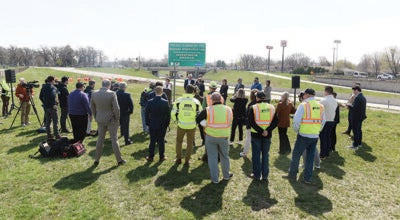Kahler Grand Hotel sale revives Rochester legends
Published 5:30 am Sunday, February 10, 2013
ROCHESTER — One senses that if the walls of the Kahler Grand Hotel in downtown Rochester could speak, they might never shut up.
And, oh, what an incorrigible name-dropper! Boxer Muhammad Ali, evangelist Billy Graham, actor Jimmy Stewart, King Hussein of Jordan, and Presidents Lyndon Johnson and Ronald Reagan all stayed at the Kahler.
Gen. Dwight D. Eisenhower gave a campaign speech standing atop a table in the Elizabethan Room. Helen Vorhees, heiress of the Brach candy-making family, was last seen checking out of the hotel before disappearing and never being seen again.
So when five Midwest investors agreed recently to buy the Kahler Grand, three other downtown hotels and a commercial laundry business for $230 million, they invested in something more than properties. They also bought into a quirky, colorful, near-century-long history.
That history began in 1921 with the opening of the Kahler, a hybrid that combined features of a hotel and hospital with three operating rooms and several laboratories. The hospital functions were phased out in 1953, but for years afterward a nursing service offered guests a unique form of room service: The option of an enema without ever leaving the hotel.
Like so much of Rochester’s growth, there would have been no Kahler without Mayo Clinic. Unlike most medical centers, Mayo’s early 20th-century rise took place in a rural backwater with few of the hotel accommodations necessary to serve the city’s influx of patients. Mayo’s expanding clientele fueled the city’s hotel industry, at the center of which was the Kahler, which later became known for its red-neon sign blazing atop the city’s skyline.
“Typically, places like the clinic aren’t in towns as small as Rochester. They’re usually in New York City or Boston or Chicago,” said Alan Calavano, an area historian whose book “Rochester” describes the growth of the city’s hotels. “People wouldn’t have come here if they weren’t being cured.”
And that partnership left its stamp on the hotel in different ways: The hotel was built across the street from Mayo, and an underground subway connected the two structures. From the then-Pinnacle Restaurant atop the Kahler, the conversations overheard were sometimes more subdued than festive, as topics turned to impending operations or diagnostic verdicts.
But that’s not to say that everybody talked in whispers. Calavano said Roy Watson Jr., the one-time president of the Kahler Corporation who died last year, told him that the bars at the top of the Kahler sometimes stayed open past the 1 a.m. drinking hours, abetted by Rochester police who turned a blind eye to the activities.
“They would drink up there to four or five in the morning, if there was some reason to or someone was in town,” Calavano said.
But what made the Kahler something different, something special were the sports stars, Hollywood personalities and the politically powerful who paraded through the hotel’s lobby.
It was at the Kahler, noted one observer, that kings and queens rubbed shoulders with Iowa farmers. Jack Benny, taking long pulls from his cigar, held court at the Kahler while taking questions from local media. Reagan made routine visits to the clinic, invariably dressed — or so it seemed — in the same natty tweed jacket.
The Kahler also had to be nimble enough to indulge its guests’ peculiar demands and tastes. Baseball manager Leo Durocher had a special mattress stored at the Kahler for him. Lyndon Johnson would commandeer a hotel elevator for his entourage’s exclusive use. Fresh squid was flown in from Chicago to satisfy the finicky tastes of some South American guests. Some foreign leaders brought their own cooks and their own food with them.
Yet some famous guests preferred to check in under aliases to avoid the publicity. And then there are the stories that never made the front pages of newspapers, the dramas that remain contained, like ghosts, within the walls of the Kahler Hotel. And about those histories, the walls are not talking.
“Roy Watson had all kinds of stories,” Calavano said.





